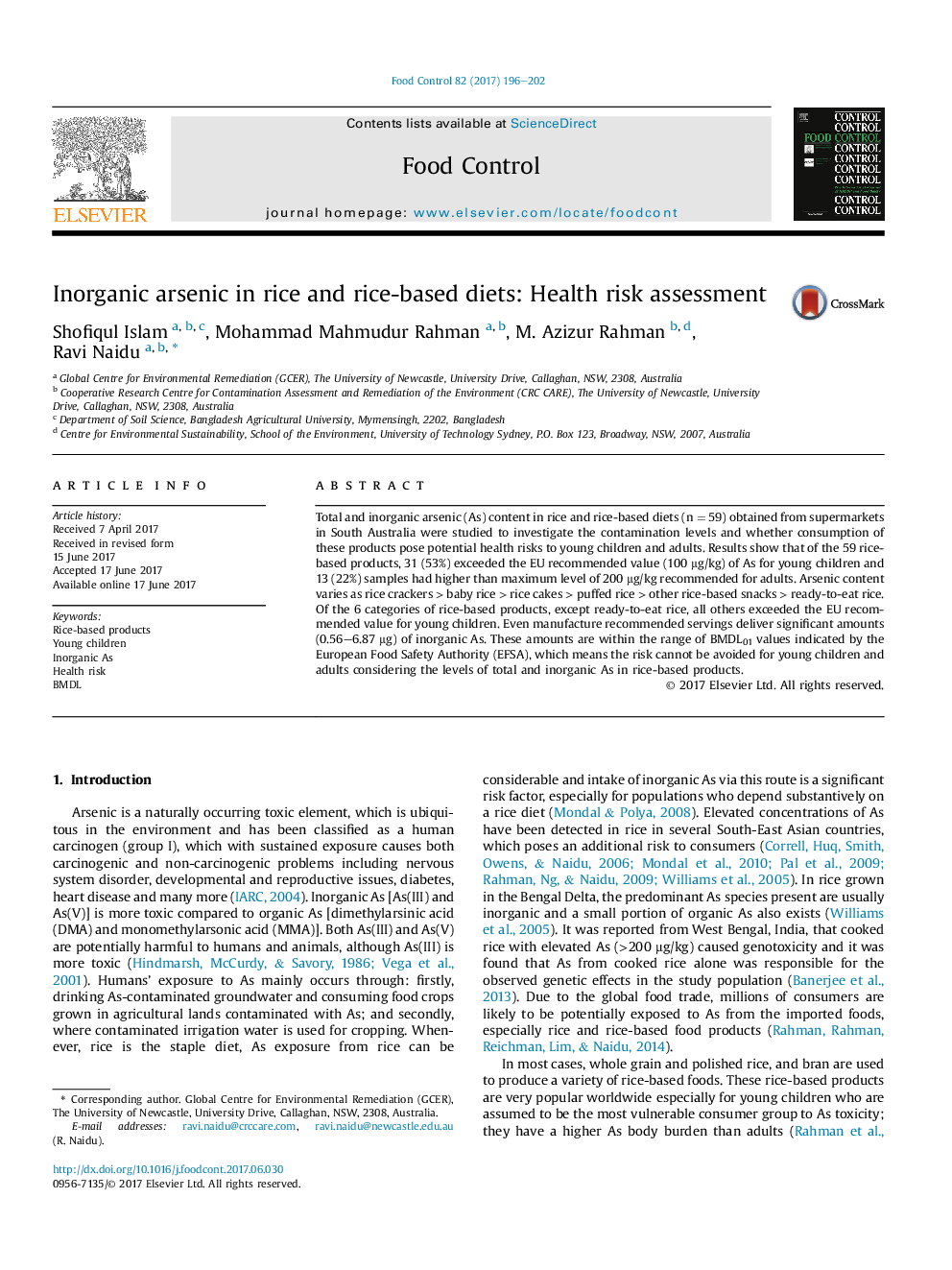| کد مقاله | کد نشریه | سال انتشار | مقاله انگلیسی | نسخه تمام متن |
|---|---|---|---|---|
| 5767150 | 1628382 | 2017 | 7 صفحه PDF | دانلود رایگان |
- Significant level of arsenic (As) in all rice-based products.
- Arsenic content varies as crackers > baby rice > cakes > puffed rice > ready-to-eat rice.
- 75% of rice-based products had inorganic As greater than the EU recommended value.
- Manufacturer recommendation may lead to 0.56 to 6.87 μg inorganic As/serving.
- Young children are most at risk from ingestion of rice-based products.
Total and inorganic arsenic (As) content in rice and rice-based diets (n = 59) obtained from supermarkets in South Australia were studied to investigate the contamination levels and whether consumption of these products pose potential health risks to young children and adults. Results show that of the 59 rice-based products, 31 (53%) exceeded the EU recommended value (100 μg/kg) of As for young children and 13 (22%) samples had higher than maximum level of 200 μg/kg recommended for adults. Arsenic content varies as rice crackers > baby rice > rice cakes > puffed rice > other rice-based snacks > ready-to-eat rice. Of the 6 categories of rice-based products, except ready-to-eat rice, all others exceeded the EU recommended value for young children. Even manufacture recommended servings deliver significant amounts (0.56-6.87 μg) of inorganic As. These amounts are within the range of BMDL01 values indicated by the European Food Safety Authority (EFSA), which means the risk cannot be avoided for young children and adults considering the levels of total and inorganic As in rice-based products.
Journal: Food Control - Volume 82, December 2017, Pages 196-202
